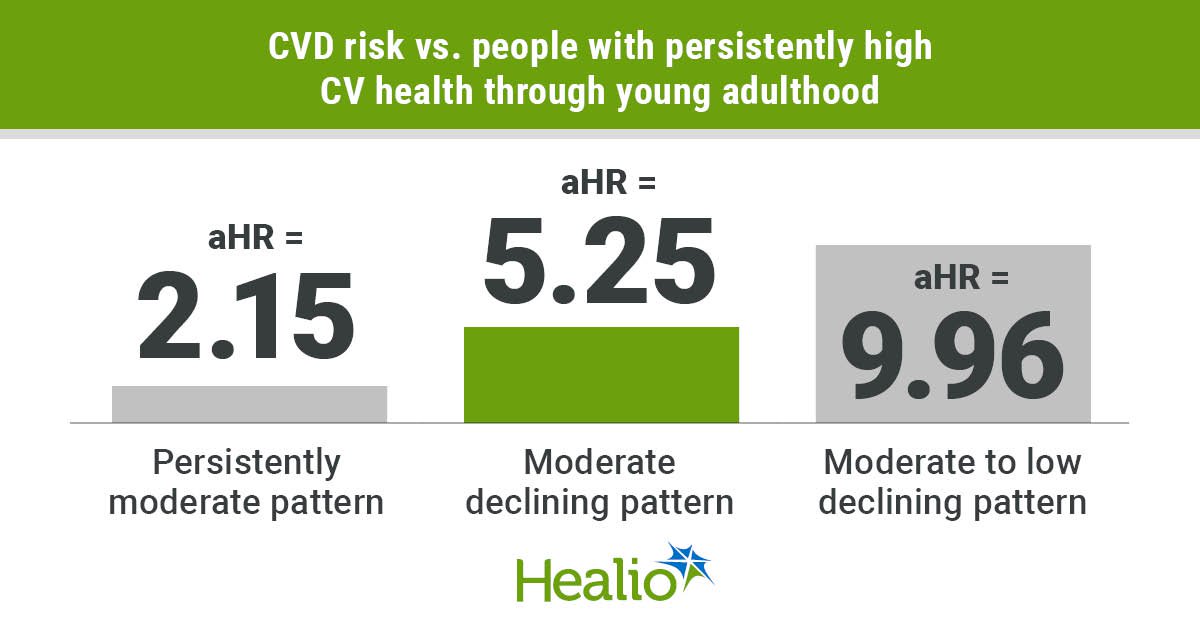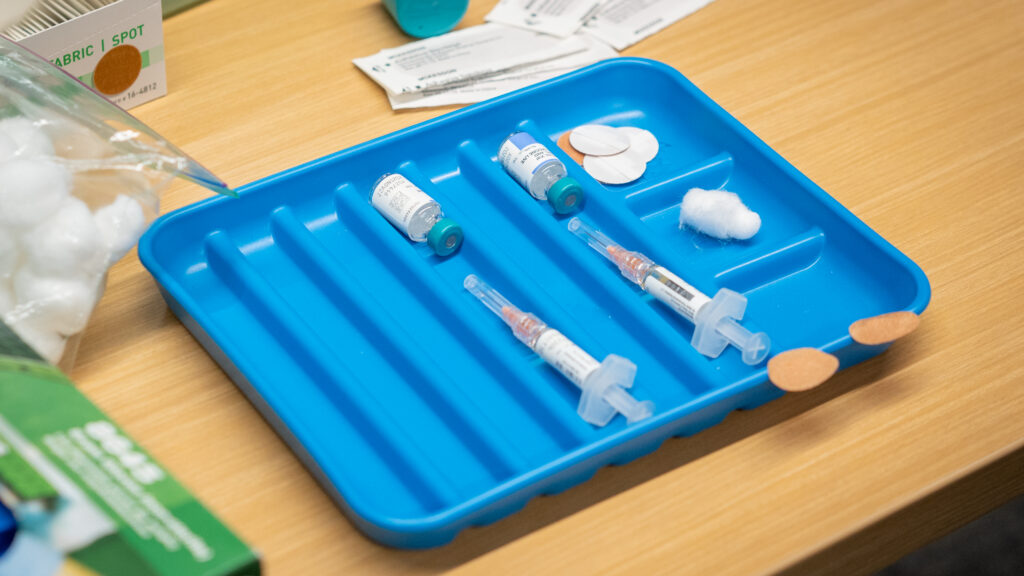October 06, 2025
3 min read
Key takeaways:
- Suboptimal CV health in young adulthood was linked to increased incident CVD risk.
- Every 10-point decrease in Life’s Essential 8 score was tied to a 53% increase in CVD risk later in life.
Changing trajectories of heart health markers during young adulthood were associated with potentially increased risk for cardiovascular disease later in life, researchers reported.
In addition, individuals who maintained higher levels of CV health through young adulthood had lower risk for incident CVD vs. those whose CV health was maintained at lower levels or declined, according to data published in JAMA Network Open.

Data were derived from Guo JW, et al. JAMA Netw Open. 2025;doi:10.1001/jamanetworkopen.2025.35573.
“A growing body of research has begun to characterize CV health in young adulthood and to study its long-term associations with later-life subclinical and premature incident CVD. However, most prior studies assess CV health with a single, cross-sectional measure, and few have examined longitudinal patterns of CV health throughout young adulthood,” James W. Guo, MD, internist at Beth Israel Deaconess Medical Center, and colleagues wrote.
To better understand how population-level and individual-level CV health through young adulthood influences CVD in later life, Guo and colleagues analyzed data from participants in the CARDIA study.
CARDIA was a prospective, epidemiological study initiated in 1985 that enrolled white and Black adults aged 18 to 30 years at baseline at four centers across the U.S. The present analysis included 4,241 participants (mean age at baseline, 25 years; 56% women; 48% Black; 52% white).
As Healio previously reported, in 2022, the American Heart Association updated its Life’s Simple 7 to include sleep as a metric of ideal CV health, renaming it “Life’s Essential 8.”
Life’s Essential 8 are clinically relevant biological and behavioral predictors of CV health, including diet, physical activity, smoking, BMI, non-HDL cholesterol, blood glucose, blood pressure and now sleep.
The primary outcome was a composite of incident CVD consisting of myocardial infarction, heart failure, stroke, coronary revascularization and CVD death after year 20 of follow-up.
The researchers identified four distinct trajectories of optimal Life’s Essential 8 from baseline to year 20 in the CARDIA study: a persistently high pattern that maintained high CV health throughout young adulthood (21.3%); a persistently moderate pattern (37.7%), a moderate declining pattern (32%); and a moderate to low declining pattern (9%).
Compared with people with persistently high pattern that maintained high CV health throughout young adulthood, individuals with a persistently moderate pattern (adjusted HR = 2.15; 95% CI, 1.04-4.47; P = .04), a moderate declining pattern (aHR = 5.25; 95% CI, 2.69-10.26; P < .001) and a moderate to low declining pattern (aHR = 9.96; 95% CI, 4.75-20.86; P < .001) experienced increasing risk for incident CVD.
In a secondary analysis of 2,857 CARDIA participants, the researchers evaluated the direction of CV health status change on incident CVD.
Compared with individuals with stable moderate CV health in young adulthood, those with stable high CV health had lower risk for incident CVD (aHR = 0.25; 95% CI, 0.09-0.69; P = .007) and those with stable low CV health in young adulthood had higher risk (aHR = 5.91; 95% CI, 2.38-14.66; P < .001).
Using a Life’s Essential 8 score scale of 0 to 100 — 100 being optimal CV health metrics — the researchers estimated that every 10-point decrease in Life’s Essential 8 score between years 0 and 20 during the CARDIA study was tied to a 53% increase in CVD risk (aHR = 1.53; 95% CI, 1.31-1.78; P < .001).
“Targeted interventions in young adulthood and earlier in the life course to promote CV health may yield substantial gains in long-term health,” the researchers wrote. “Ultimately, promoting high CV health in all adults, with even partial improvement in CV health scores, may yield substantial reductions in CVD event rates, especially among young adults who stand to benefit the most with respect to cumulative exposures to CV health levels during the remainder of their life course.”









